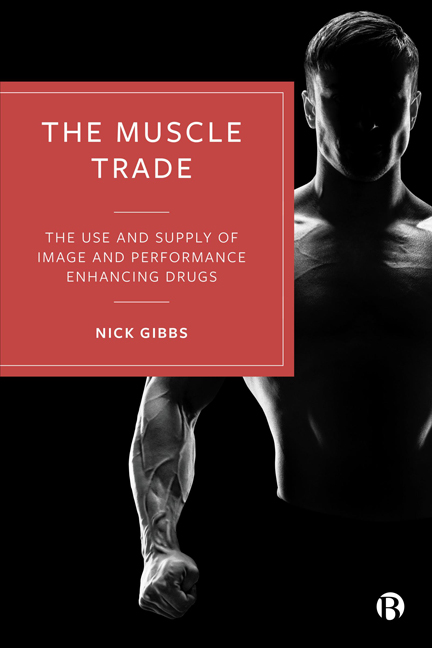Book contents
8 - Production
Published online by Cambridge University Press: 28 March 2024
Summary
Part II, which consists of four chapters, provides an analysis of the ‘muscle trade’ through the voices of users, sellers, and industry professionals. Various elements of the market – from local gym-based supply chains to online SNS sellers – will be explored, and the interconnections between each highlighted. Starting with an examination of production, the following three chapters explore my participants’ experiences of ‘traditional’ offline closed market supply, before tracking the currents of digitization and commercialization that have accompanied the ascension of the online market.
Before a picture of the distribution of IPEDs can be painted, it is vital to interrogate how and where these compounds are produced. This chapter will, therefore, examine the dual means by which illicit ergogenic aids are made, first unpacking underground laboratory (UGL) operations before turning its attention to licit pharmaceutical production.
Underground laboratories
Operation and market share
Consistent with Turnock’s (2020: 2) contention that ‘most users are likely buying UGL’, 77 per cent of my IPED-using sample acknowledged that most of their substances were manufactured in UGLs. According to Rob, “80 to 90 per cent of steroids [in the UK] are UGL-produced” as well as a selection of fat burners like T5 and DNP. In relation to AAS, Carl told me that although “tablets can be made at home. … Anything oil-based needs to be done properly in a lab. So most of the [UGL owners] buy their raws from China and then they produce them in the labs” (see Llewellyn and Tober, 2010; Denham, 2019; Turnock, 2021a). Therefore, in the words of Aaron, “Ingredients are being imported, but production is predominantly over here”. This was reflected in my sample, as 90 per cent of UGL-consuming interviewees stated that their producer was located in the UK.
Throughout data collection, the domestic nature of UGL production was commonly attributed to “the change of law a few years ago” (Aaron), wherein anabolic steroids were stripped of their status as ‘medicinal products’ in 2012 (Brunsdon, 2012). As a result, importing AAS became a criminal offence, punishable by up to 14 years in prison.
- Type
- Chapter
- Information
- The Muscle TradeThe Use and Supply of Image and Performance Enhancing Drugs, pp. 105 - 114Publisher: Bristol University PressPrint publication year: 2023

